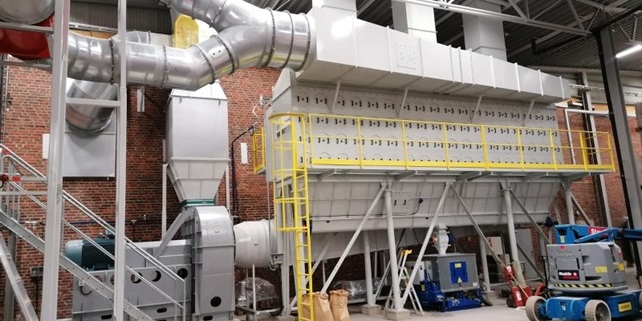What are explosive dusts and in which sectors they can be found? In this article we will explore this topic to understand specifically what we are talking about and what are the risks involved in their presence within the work environment.
What are explosive dusts? Potentially all combustible dusts deriving from oxidizable metallic materials (aluminum, iron, zinc, magnesium), natural organic substances (grain and cereals, wood, sugar) or synthetic ones (plastic, pesticides, organic pigments), but also peat and coal. Explosive dusts are subject to different explosion potentials depending on the chemical and physical characteristics of the dust itself and the characteristics of the environment in which the explosion takes place.
Explosive dusts are classified according to a number of parameters, namely:
- Kst and Pmax (maximum explosion pressure of a powder measured in Bar), this data enables the risk of dust explosion associated with a facility or process to be assessed, thus identifying the level of destructiveness of the same in the event of a deflagration. The classification goes from the lowest level St 0 to the highest St 3
- LEL and UEL, or Lower Explosion Power and Upper Explosion Limit, which indicate the explosion limits and respectively indicate the concentration in air of the flammable substance below and above which the atmosphere does not explode
- MIE, Minimum Ignition Energy, the energy which, under specified test conditions, is capable of triggering the powder and generating deflagration
- MIT (Minimum Ignition Temperature). Dusts have two ignition temperatures, one relating to the cloud and the other to the ignition of the dust layer.
Where do we find explosive dusts?
For explosive dusts to be deflagrated, however, a number of interrelated conditions must occur. These five factors to consider are also known as the explosion pentagon and include:
- Comburent, usually the oxygen contained in the air
- Ignition source
- Confined environment
- Dust of a combustible nature
- Suspended particles.
These elements help in the classification of companies and sectors considered at risk of deflagration caused by explosive dusts, identifying those that are ATEX environments. In general, however, the sectors considered at risk include:
- Chemical industry
- Landfill and construction engineering
- Energy production
- Disposal
- Gas supply
- Wood industry
- Varnishing
- Agriculture industry
- Metallurgical companies
- Food and feed industry.
In this type of activity, the company areas considered to be at risk must therefore be identified and ATEX zones classified accordingly. We will se them in the next article.
Vuoi saperne di più? Download the infographic about the main explosive dusts and their applications!



